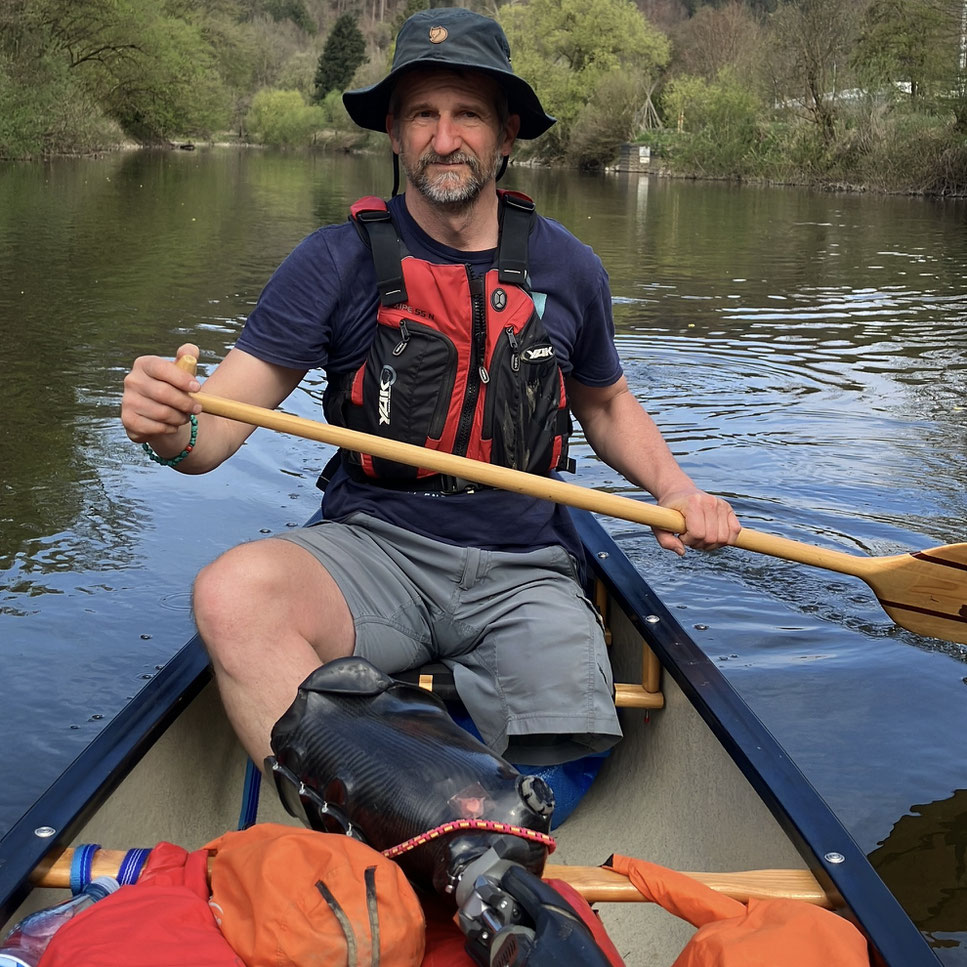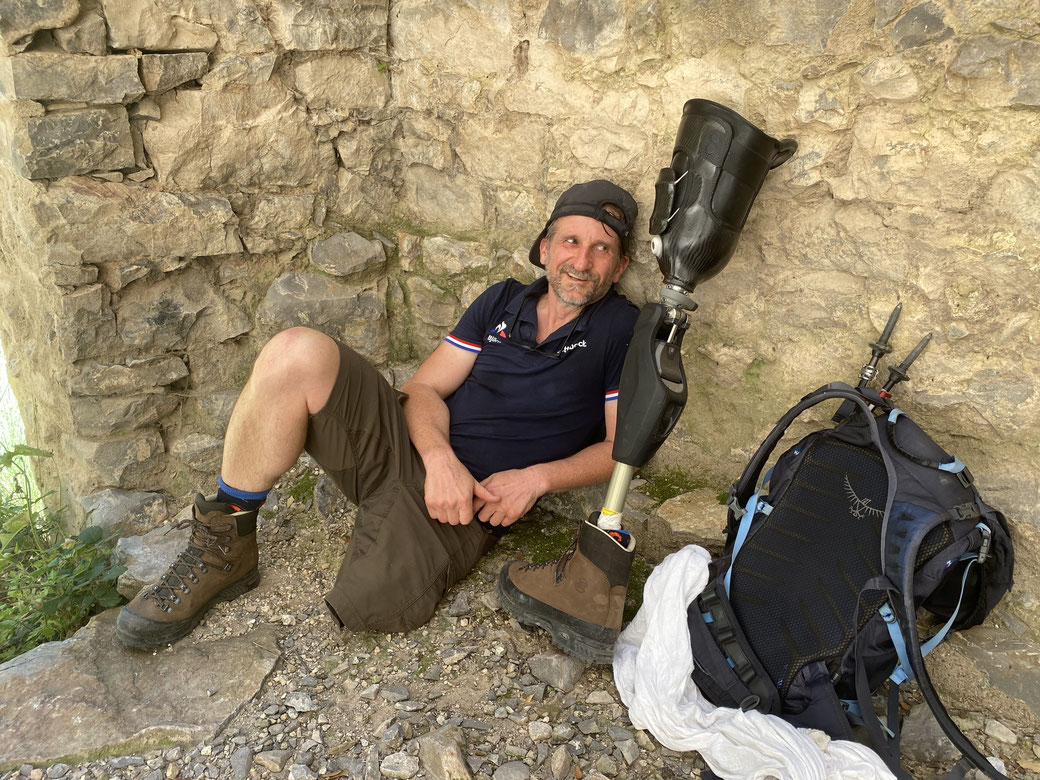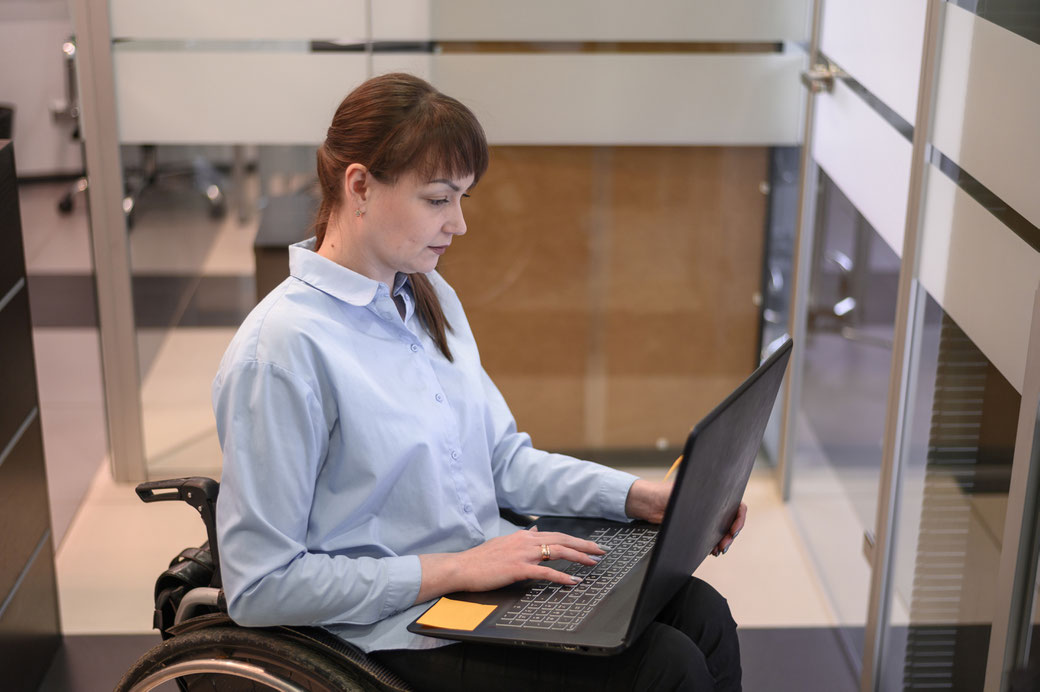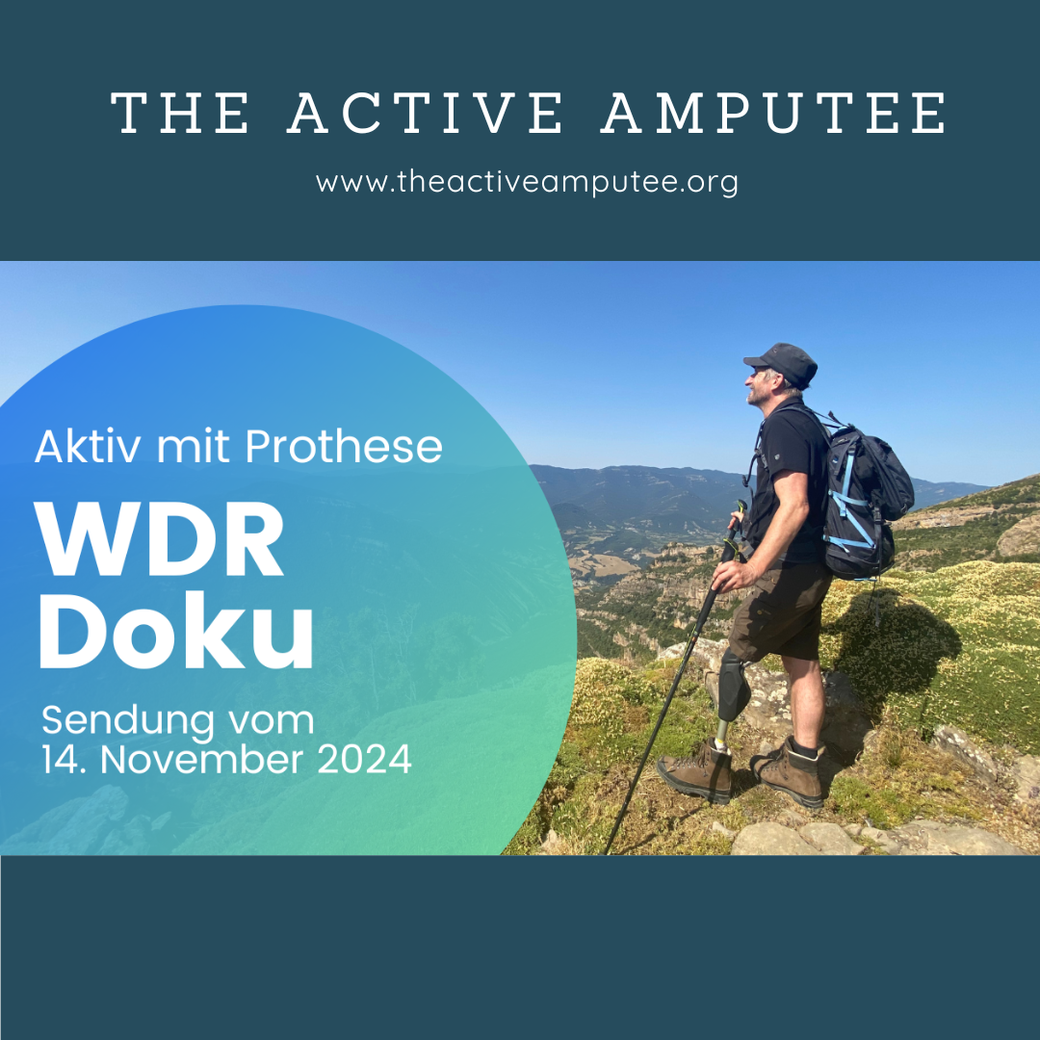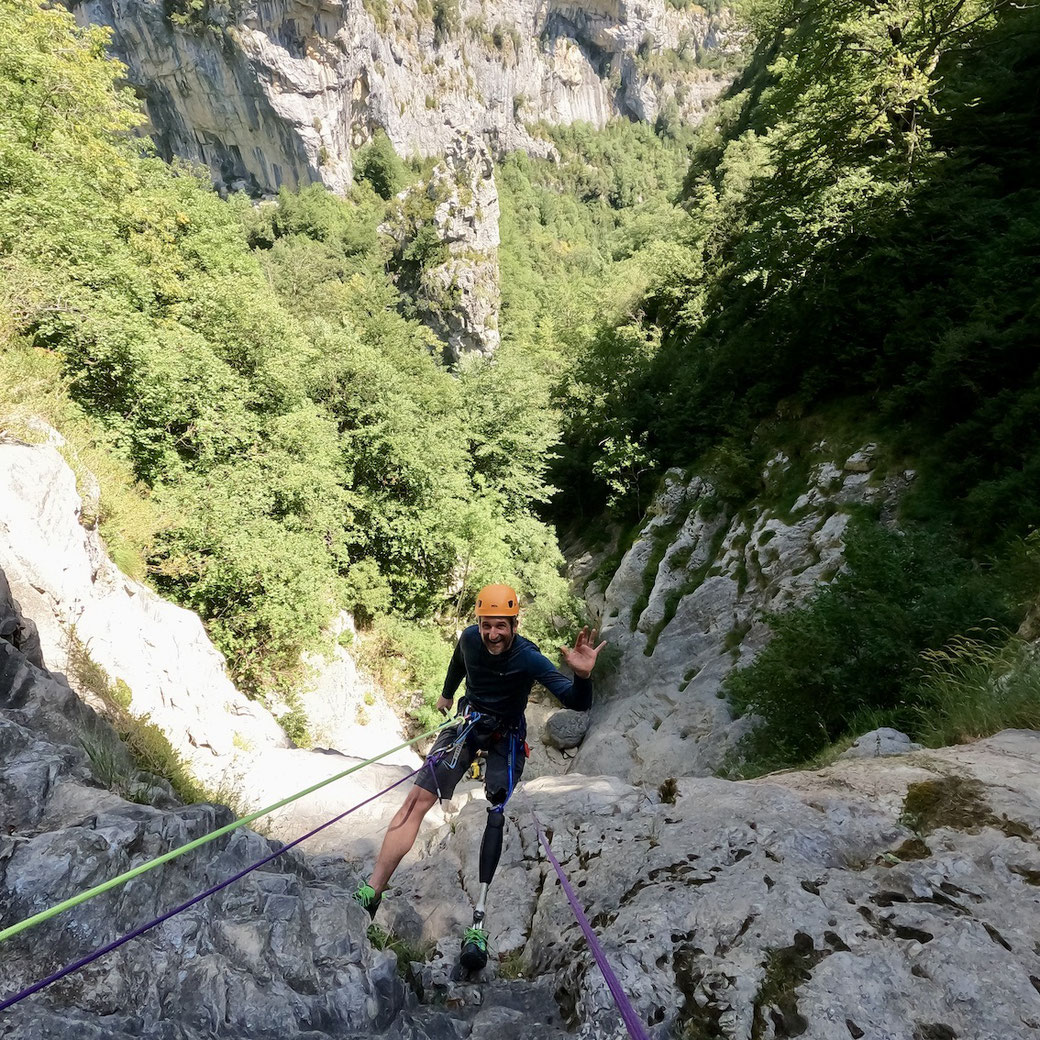Adjustable adventures with ClickMedical devices
From Riverbanks To Campfires—Adjustability Makes All The Difference
I recently took on a two-day canoe trip with my RevoFit® and RevoLock® systems down the River Lahn in Germany, adjusting for every phase of the journey: Tight fit for hauling gear, loose for long sits, and quick off/on—even in a wobbly canoe when needed. And yes, I can confidently say: “An adjustable socket lets me handle whatever the adventure throws at me.”
"My quarterly blogpost" by Sydney Marshburn - Summer 2025
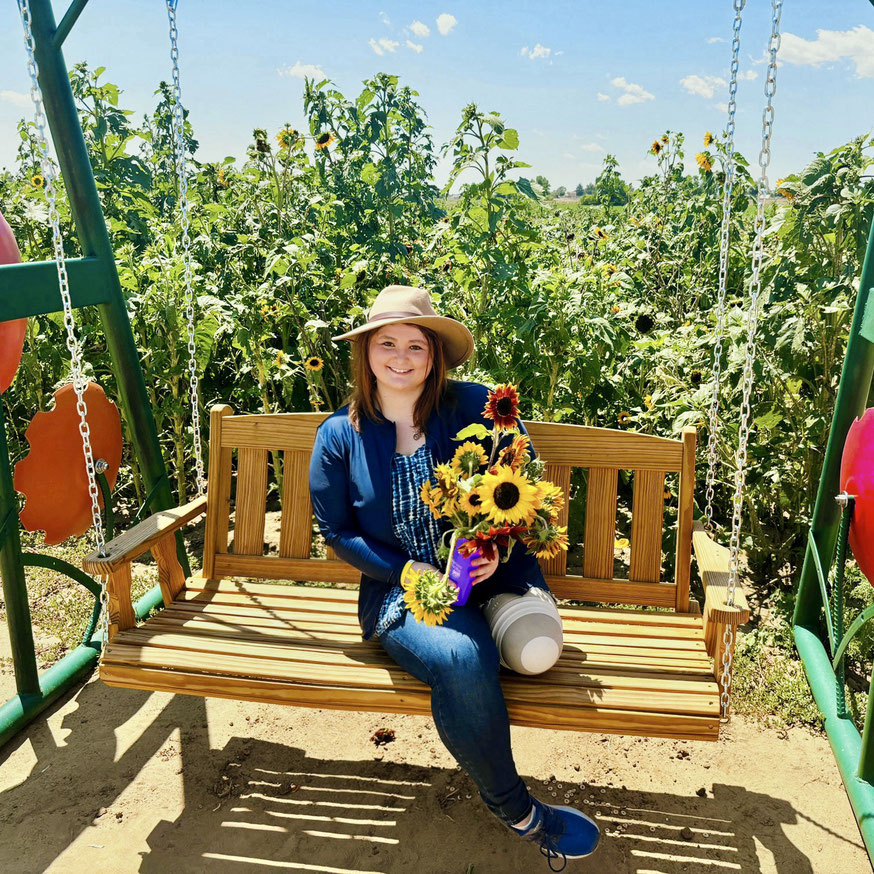
Grit, Sweat, And The Summer Reality Of Limb Loss
Summer - the season of golden evenings, long hikes, and beachside relaxation. However, for individuals with limb loss, it also marks the beginning of a far less glamorous phenomenon: the intersection of heat, humidity, and prosthetic discomfort. It's a reality few discuss, but nearly every amputee knows all too well.
Yes, we climb mountains and stroll along the shoreline, just like the images in motivational advertisements. Still, there's another side of summer that rarely gets airtime: swollen residual limbs, heat rashes, and the routine of nonchalantly removing a prosthesis in public while pretending it's perfectly normal. It's time we talk about the unfiltered summer experience of living with limb loss.
Terry Fox: A Legacy of Courage and Determination
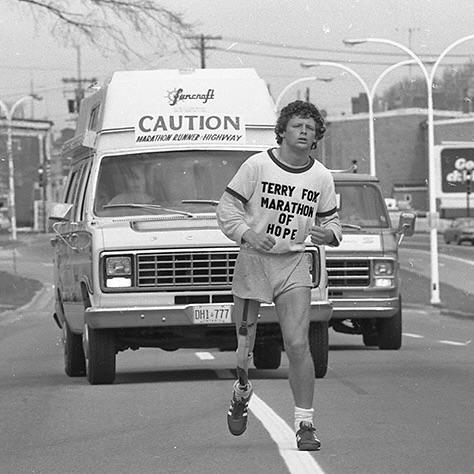
Terry Fox: Redefining Ability, One Step At A Time
Terry Fox is one of Canada's most revered national heroes, not only for his athletic accomplishments but for his unwavering determination in the face of adversity. Born on July 28, 1958, in Winnipeg, Manitoba, and raised in Port Coquitlam, British Columbia, Terry grew up as an active and determined individual. However, it was his response to a personal tragedy that defined his legacy and inspired millions around the world.
At the age of 18, Terry was diagnosed with osteosarcoma, a type of bone cancer, which led to the amputation of his right leg. During his treatment, he witnessed the suffering of fellow cancer patients, many of them young children, and became determined to do something meaningful to fight the disease. Motivated by a deep sense of compassion and a desire to make a difference, Terry began training for what he called the "Marathon of Hope"—a cross-Canada run to raise money and awareness for cancer research.
This time of the year in 1980, Terry was about one third into his "Marathon of Hope". So I thought it would be a good occasion to remember him with an article on my blog.
Time to celebrate: One year with the Genium X4
One Year with the Genium X4 Micro-processor Knee
Tomorrow, May 15th, 2025 it will be one year that Ottobock introduced its newest model of micro-processor knees to the market: The Genium X4. And right from its launch during the OT World in Leipzig, I had the chance to use the knee day in, day out. So it's time to lean back and look back at what the knee and I have done together. And then it will be time to look ahead and see what's coming up next. And let me tell you - spoiler alert - in both cases it has been a lot.
Neue Podcast-Folge mit Thomas Frey
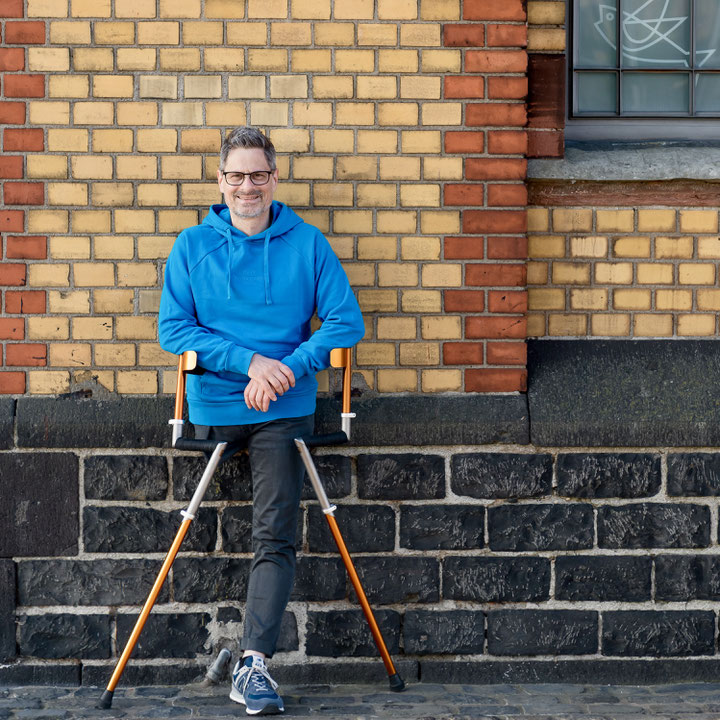
Darf ich vorstellen: Thomas Frey und das Amp-Surfcamp
Folge 31 der deutschen Ausgabe meines Podcasts ist seit ein paar Tagen zu haben.
Heute im Interview Thomas Frey aus Köln. Thomas ist der Macher hinter dem mittlerweile in der elften Auflage stattfindendem Amp-Surfcamp. Thomas kann auf 40 Jahre Leben mit Amputation zurückblicken und ist stets voller Ideen, wie er seine Erfahrungen für sich selbst und für andere nutzbar macht und für ein besseres Leben einbringen kann.
Wer mehr über Thomas und das Amp-Surfcamp erfahren will, der schaut am besten mal auf seiner Homepage vorbei oder folgt ihm auf Instagram, LinkedIn oder YouTube.
Fünf Bilder und ich: Heute Kathy Rüsbüldt
Meine Bilder, meine Worte
So, nach einer längeren Pause geht es weiter mit der Serie 'Fünf Bilder und ich'. In mehr oder weniger regelmäßigen Abständen stellen sich Leute aus der Community anhand von fünfen ihrer Lieblingsbilder vor. Den Auftakt macht heute Kathy Rüsbüldt auf den hohen Norden der Republik. Vielen von euch ist Kathy durch ihre beeindruckenden Leitungen auf dem Stand-Up Paddle-Board bekannt. Einige hatten vielleicht auch schon die Chance, sie bei einem der SUP-Live-Events kennenzulernen.
Inklusionstag 2025

Be Your Own Hero läd ein zum Inklusionstag in Köln
Auch 2025 finden wieder zahlreiche Veranstaltungen statt, bei denen Menschen mit und ohne Handicap so einiges Neues ausprobieren können. Einen tollen Auftakt macht dieses Jahr der Inklusionstag von Be your Own Hero (kurz BYOH) auf der Fibo-Messe am 11. April in Köln.
BYOH ist ein inklusives Kampfsportprojekt, durch das Menschen mit und ohne Handicap in die Welt des Kampfsports eintauchen können. Ob Jung oder Alt – alle am Kampfsport interessierten Menschen können bei BYOH nicht nur mit geübten Kampfsportrainer*innen trainieren, sondern vor allem eine Menge Spaß haben und viele neue Erfahrungen sammeln. Ganz nach dem Motto: Sei dein eigener Held!
Nach den großartigen Erfolgen in den vergangenen Jahren, wird BYOH gemeinsam mit seinen langjährigen Unterstützer*innen von Fight Club Gelsenkirchen und anderen Partner*innen abermals einen Inklusionstag mit spannendem Programm anbieten. Und zwar am 11. April im Rahmen der Fibo, der weltweit größten für Fitness, Wellness und Gesundheit in Köln.
Also am besten gleich schon mal den Termin im Kalender vormerken.
Darf ich vorstellen: Die Hopper Blade

Trau dich zu träumen: Wie Hopper das Laufen für Amputierte neu definiert
Als Jérôme Bernard gerade neun Jahre alt war, verlor er bei einem, wie er es salopp nennt, „kleinen Zwischenfall im Leben“ beide Beine und einen Arm. Natürlich war das ein einschneidendes Ereignis, aber das hielt ihn nicht davon ab, mit seinen Freund*innen zu spielen und sich unzähligen Herausforderungen zu stellen. Mit der unerschütterlichen Unterstützung seiner Familie bastelte er sich behelfsmäßige Prothesen, die es ihm ermöglichten, mit dem Fahrrad über Bergpässe zu fahren und Skihänge hinunter zu carven.
May I introduce you to the Hopper blade

Dare to Dream: How Hopper is Redefining Running for Amputees
When Jérôme Bernard was just nine years old, he lost both legs and an arm in what he casually calls 'a little incident in life'. Of course, it was a life-changing event, but that didn’t stop him from playing with his friends and taking on countless challenges. With the unwavering support of his family, he crafted makeshift prostheses that allowed him to cycle over mountain passes and carve his way down ski slopes.
Ten years Amplitude Magazine
Reeling in the Years
Re-post from a recent article by Amplitude Magazin
Amplitude’s debut issue appeared in March 2015, 10 years ago this month. To help mark the occasion, our longtime friend and fellow storyteller Bjoern Eser invited us onto his podcast (The Active Amputee - English Edition) to look back on an eventful decade for the magazine and for the limb loss community as a whole.
The conversation runs a little over half an hour. Below, we’ve posted a few snippets of the transcript to whet your appetite. There’s a lot more information in the full episode, which you can hear at Buzzsprout (and most of the other players of your choice). Our thanks to Bjoern for the chance to reminisce, and for his many years of collaboration and support.
Visit Amplitude's webpage to find amazing information. You find the link here.
Climb High: Gelebte Inklusion beim Klettern

Klettern für Menschen mit und ohne Behinderung
Heute möchte ich euch ein cooles Sport-Projekt vorstellen. CLIMB HIGH! e.V. - und sie leben Inklusion! Ich habe die Leute von CLIMB HIGH! das erste Mal auf der REHACARE Messe in Düsseldorf im September 2024 getroffen. Und da ich selbst gerne kletter, war mein Interesse sofort geweckt. Nach einem ersten Gespräch mit den Macher*innen hinter dem Verein war mir schnell klar: Da will ich mehr erfahren. Und davon sollen mehr Menschen wissen. Daher heute hier ein erster Artikel. Und ein Podcast ist bereits geplant.
HelpYuu: Eine Anmeldung, alle Förderungen
Etwa 12 Milliarden Euro an Fördergeldern bleiben in Deutschland ungenutzt
Als ich das erste Mal von HelpYuu hörte, dachte ich: Klingt zu gut, um wahr zu sein. Eine Plattform, die Menschen mit Behinderungen oder Pflegegrad hilft, an Fördergelder zu kommen – und das ohne bürokratischen Stress? Doch je mehr ich mich damit beschäftigte, desto klarer wurde mir, dass HelpYuu genau das tut: Es nimmt den Förderprozess in die Hand, damit Betroffene sich auf das konzentrieren können, was wirklich zählt – ihr Leben.
Neue Podcastfolge: Open Ocean e.V.
Open Ocean e.V. - Surfen und Meet für alle
So, die erste Podcastfolge für das neue Jahr ist ab sofort zu haben. Dieses Mal habe ich Christina Paetrow und Johannes Laing von Open Ocen e.V. im Interview. Euch erwarten 45 Minuten Unterhaltung, vollgepackt mit Infos rund ums adaptive Surfen, gelebte Inklusion und allerlei Vorgeschmack auf einen aktiven Sommer. Also: Schnappt euch einen Kaffee, macht es euch gemütlich und gönnt euch diese Folge des Podcasts.
Digital nomads with a disability
Redefining Digital Nomad Life For People With Disabilities
Living as a digital nomad offers a rare combination of independence and discovery, especially for individuals with disabilities. While the lifestyle is full of possibilities, it comes with unique hurdles that demand creative approaches. Adopting adaptive tools and seeking accessible resources can turn obstacles into opportunities for growth. Remote work has become more feasible than ever, providing the chance to build a career without being tied to a single location. Thoughtful planning and the use of technology help ensure this way of life is both achievable and fulfilling.
Neuer Artikel im Barrierefrei Erleben Magazin

Inspiration Für Ein Aktives Leben
Heute nur ganz kurz, da ich leider grade gesundheitlich etwas angeschlagen bin. Gestern erschien die online-Version meines Artikels für das Barrierefrei Erleben Magazin. Wer Lust auf einen kurzen Text zu einigen meiner Aktivitäten aus dem letzten Jahr hat, wer Lust auf Inspiration für Unternehmungen in diesem neuen Jahr hat, oder wer einfach nur ein paar nette Bilder von einer Prothese draußen in der Natur sehen will, dem kann ich diesen Beitrag sehr ans Herz legen. Eine ausführliche Rückschau zu 2024 folgt, sobald ich wieder fit bin.
Christmas gift shopping guide for amputees
Ten Great Gifts For Those Living With Limb Loss
Christmas is just around the corner. Less than three weeks, to be precise. If you haven’t done so, it is high time to think about presents for your loved ones. To make things easier, here are ten great ideas for your amputee friends and family members. Ranging from little ideas for a few bucks to big monster presents that blow a similarly big monster hole into your budget. We are talking from roughly 15.00 US$ to around 20,000.00 US$. Yes, I know, that is a very steep - almost obscene - price tag. But don't worry: seven of the ten gift ideas listed below are below 200.00 US$. So I am sure there is something for everybody.
Nach einem Lawinenunglück zurück in ein aktives Leben II

Marian Veith: Lawinenüberlebender auf dem Weg zurück in ein aktives Leben
In der vergangenen Woche gab es hier den ersten Teil meines Interviews mit Marian Veith zu lesen (wer den ersten Teil noch nicht gelesen hat, findet ihn hier). Marian hat vor einigen Jahren nur knapp eine Lawinenunglück überlebt. Seine Geschichte wie er nach lebensverändernden Verletzungen wieder auf die Beine kam steht im Focus der YouTube Dokumentation „New Boundaries - The Story of Marian“. Der Film ist ein gemeinsames Projekt von Ottobock und der Filmproduktion WE MAKE THEM WONDER.
Im heutigen zweiten Teil des Interviews geht es um die filmische Aufarbeitung seiner Geschichte und die abermalige Auseinandersetzung mit dem Lawinenunglück, die Reise zurück in ein sehr aktives Leben, den so wichtigen Austausch mit anderen Amputierten und die schon erreichten Meilensteine auf dem Weg zur Erfüllung eines Traumes: Wieder auf Skiern in den Bergen unterwegs zu sein.
Doku: Aktiv nach einer Amputation
Das richtige Mindset und eine gute Prothese machen fast alles möglich
Am Mittwoch war ein kurzer Beitrag über mich und mein aktives Leben mit Prothese in der WDR Lokalzeit zu sehen. Wer den Beitrag verpasst hat und da gerne noch mal reinschauen möchte, der findet ihn jetzt auch hier. Viel Freude beim Anschauen.
Nach einem Lawinenunglück zurück in ein aktives Leben I

Marian Veith: Lawinenüberlebender
Vor einem guten Monat wurde die YouTube Dokumentation „New Boundaries - The Story of Marian“ der Öffentlichkeit vorgestellt. Die vierteiligen Serie - ein gemeinsames Projekt von Ottobock und der Filmproduktion WE MAKE THEM WONDER - begleitet den 34-jährigen Marian Veith auf seinem Weg und erzählt, wie er nach einem lebensverändernden Schicksalsschlag über seine Grenzen hinauswächst und sich dafür ein großes Ziel setzt: Eines Tages wieder Skifahren zu können.
Die sehr einfühlsam erzählte Geschichte, die in meinen Augen enorm gelungen filmische umgesetzt wurde, hat mich gleich bewegt. Und so ergriff ich die dankbar Gelegenheit beim Schopfe, als ich die Möglichkeit hatte, mit Marian ein Interview führen zum können.
Im ersten Teil unseres Gespräches geht es um den Unfall, die Zeit in der Klinik, die ersten Schritte auf der Prothese und das erste große Erfolgserlebnis nach seiner Amputation: Eine Runde mit Prothese auf dem Fahrrad. Dieser Artikel ist ab heute auf meinem Blog zu lesen.
In der kommenden Woche erscheint dann der zweite Teil des Interviews. Dann geht es um die filmische Aufarbeitung seiner Geschichte und die abermalige Auseinandersetzung mit dem Lawinenunglück, die Reise zurück in ein sehr aktives Leben, den so wichtigen Austausch mit anderen Amputierten und die schon erreichten Meilensteine auf dem Weg zur Erfüllung eines Traumes: Wieder auf Skiern in den Bergen unterwegs zu sein.
An update on my fundraiser for the Range of Motion Project 2024
Being out and about, and doing so for a good cause
It's been a month since I completed by fundraiser for the Range of Motion Project's (ROMP) Climbing for ROMP initiative. Back then, I set out to tackle my very own triathlon.
- On October 1st, I climbed a total of 250m in our local climbing gym (well, the goal was 250m; the actual climbs ended up being a total of about 350m).
- On October 2nd, I did a 15km hike with 15kg on my back (again, I was better in hiking than in there underlying math when packing my pack. so I ended up carrying 19kg through our region).
- And on October 3rd, I kayaked 15km on a lake nearby.
And while I was busy working my way through these three legs of my Climbing for ROMP challenge, you were busy donating generously - something for which I am very grateful. So together we raised close to 600.00 Euros/630.00 US$. I will get back to each and every person who supported this initiative over the coming days and thank you personally for your contribution.
If you still want to make a donation, there is still time. You can donate directly to ROMP here! Every dollar counts!
Thank you so much.
Open Ocean - Surfen und Meer für alle
Open Ocean e.V. - Wellenreiten für alle
Vor ein paar Monaten gab es hier auf dem Blog einen Filmtip. Ich hatte tags zuvor den Dokumentarfilm 'Open Ocean' - hier ist der Link zu meinem Artikel aus dem April 2024 - gesehen und war begeistert. Ein Film übers Surfen. Ein Film voller Optimismus und Lebensmut. Ein Film, der mich erstmals auf den Verein aufmerksam machte, der in diesem Film im Mittelpunkt stand. Und daher möchte ich euch heute eben diesen Verein etwas näher vorstellen.
House hunting as a person with a disability
Essential Tips For House Hunting With Accessibility In Mind
Finding an accessible home is more than just finding a nice house; it’s about seeing if a home can support your daily life. Knowing what to look for in an accessible home is essential, whether you’re moving for the first time or need a place that better fits your needs. In this article, we’ll share tips on how to find a home that works for you.
My Fundraiser for the Range of Motion Project 2024
10th Anniversary Climbing For ROMP!
In 2024, the Range of Motion Project (ROMP) is celebrating ten years of Climbing for ROMP! Climbing for ROMP was established in 2015 to commemorate the 25th anniversary of the Americans with Disabilities Act (ADA). It has since become a global movement, highlighting the importance of access to prosthetic care and the international significance of legislation protecting rights for those with disabilities.
Over the past nine years, Climbing for ROMP has raised over $750,000 to provide prosthetic care to those in need, thanks to thousands of people joining us on over 300 summits around the world! This year, our goal is to create the most inclusive and impactful mobility campaign ever. Together, our goal is to raise $500,000 for ROMP by climbing our mountains! And you can be part of it!
ANATOMIC STUDIOS captures the spirit of the Paralympics
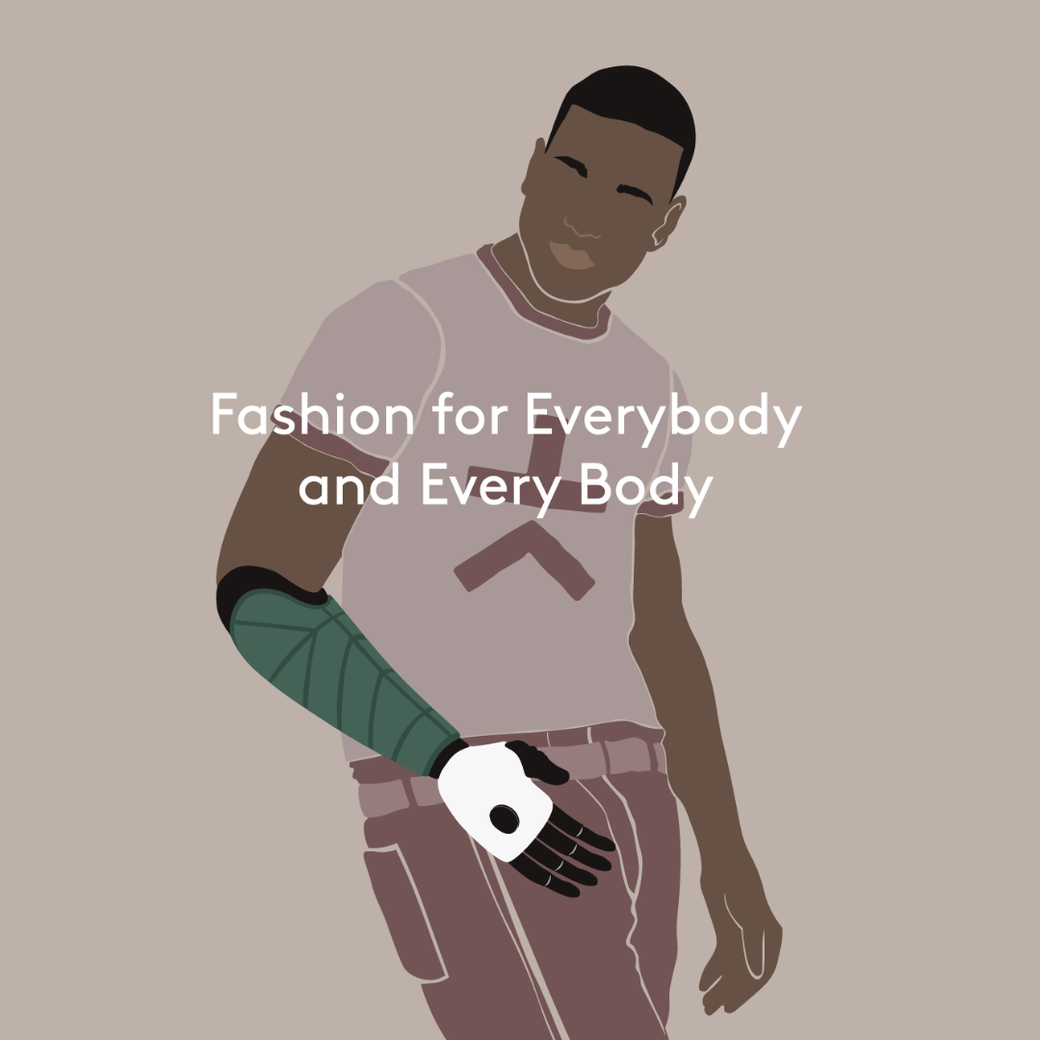
Exciting News From ANATOMIC STUDIOS
Earlier this year, during the OT World in Leipzig/Germany, I had the pleasure to meet up with all members of ANATOMIC STUDIOS’ team. The small company from Malmö in Sweden’s south is famous for its stunning prosthetic covers. True to their motto ‘Fashion for Everybody and Every Body’, the ANATOMIC STUDIOS booth at the Leipzig trade fair was a real crowd puller, showcasing their latest collection of creative designs, offering trendy merch - and great chats over coffee. As I recently spotted three new designs on the company’s Instagram feed, designs especially made for this year’s Paralympic Games, I thought it was time to reach out to Emelie, one of the founders of ANATOMIC STUDIOS, again and catch up on the developments of the last couple of months and their plans for the near future. And here is what she had to say.
Das Genium X4 von Ottobock im Alltagstest
Meine ersten drei Monate mit Ottobocks Genium X4
So, hier ist er also endlich. Der langersehnte Alltagstest des neuen Knies von Ottobock. Wie viele von euch wissen, nutze ich das Genium X4 seit der OT World in Leipzig im Mai diesen Jahres als mein Alltags- - und einziges - Prothesen-Kniegelenk.
In diesen drei Monaten ist es mir wortwörtlich keinen Schritt von der Seite gewichen: Von den täglichen Familieneinkäufen hin zu kleineren Wanderungen hier bei mir in der Gegend. Vom alltäglichen Auf und Ab bei uns zuhause - unsere Wohnung erstreckt sich über vier Etagen - hin zu langen Touren mit schwerem Gepäck. Vom Gehen in der vollen Fußgänger*innen-Zone an einem Samstagmorgen in der Kölner Innenstadt zu langen Canyoning-Touren in den abgelegenen Schluchten der spanischen Pyrenäen.
Seit drei Monaten ist das Knie mein treuer Begleiter. In der Zeit durfte es fast 500 Kilometer laufen und mich auf dem ein oder anderen Abenteuer begleiten. Und heute möchte ich ein wenig von diesen ersten drei Monaten berichten und meine bisherigen Eindrücke schildern.
Click Medicals RevoFit System: Damit werden Abenteuer wieder möglich
Ein kleines Gerät, das Amputierte neue Welten erschließt
Ich bin gerade von zwei Wochen Urlaub zurück; hauptsächlich in den spanischen Pyrenäen mit ein paar Tagen in Frankreich. Und was soll ich sagen: Ich habe es geliebt. Jeden einzelnen Tag davon. Und ihr könnt euch vielleicht denken, warum. Nun, wenn ihr wisst, wann ich mich am lebendigsten fühle, dann ja. Ja, die Möglichkeit, Zeit in der freien Natur zu verbringen, neue Dinge auszuprobieren, an meine Grenzen zu gehen und mich aus meiner Komfortzone herauszubewegen. Wenn dann noch nette Menschen und gutes Essen dazukommen, bin ich glücklich. Und die Auszeit bot all das. Und ich möchte einige der Highlights mit euch teilen.
Click Medical’s RevoFit System: The Adventure Enabler
A Small Device Enabling Amputees To Do Big Adventures
I am just back from two weeks of holidays; mainly in the Spanish Pyrenees with a few days in France. And what can I say: I loved it. Each and every day of it. And you might be able to guess why. Well, if you know what makes me feel alive, that is. Yes, being able to be spend time in the great outdoors, trying out new things, pushing my boundaries, and challenging myself out of my comfort zone. Add great lovely people and good food to the mix and see me happy. And the time away offered all of this. And I want to share some of the highlights with you.
Die #unofficialdiscipline bei den Paralympics in Paris 2024

Der alltägliche Kampf für Menschen mit Behinderungen
Ottobock startet Initiative zu den Paralympics: „The Unofficial Discipline“. Während die Welt sich in Paris für die Paralympischen Spiele versammelt und Athletinnen und Athleten in 23 Disziplinen gegeneinander antreten, startet Ottobock mit Unterstützung des Internationalen Paralympischen Komitees (IPC) eine symbolische neue Disziplin. In dieser „Unofficial Discipline“ treten Menschen mit Behinderungen tagtäglich unfreiwillig an. Es geht um „Wettkämpfe“ im Alltag: defekte Aufzüge, fehlende Rampen, Treppen, Kopfsteinpflaster, schmale Türen, … und auch Vorurteile, gegen die sie sich wehren müssen. Solche Herausforderungen sind für die meisten Menschen unsichtbar. Dabei leben weltweit über eine Milliarde Menschen mit einer Form von Behinderung, das sind etwa 16 Prozent der Bevölkerung.
3. Amputierten Wandertag in der Eifel
Rein in die Schuhe und raus in die Natur
Es ist mal wieder so weit. Der Termin für die dritte Auflage des Amputierten Wandertages steht. Fritz (aka @fritzkretzschmar on Instagram) und ich laden euch ein, am 17. August bei einer gut 13km langen Wanderung durch die wunderschöne Nordeifel zu begleiten. Vor kurzem sind wir beide die Strecke probegelaufen und haben sie für gut befunden. Wieder einmal erwartet und eine schöne Mischung aus gut befestigten Waldwegen, schmalen Pfaden, ebenen Abschnitten entlang der Rur, recht steilen Passagen durch die an den Fluß angrenzenden Hügel, schöne Aussichtspunkte, die zum Verweilen einladen und faszinierende Sandsteinformationen. Und natürlich diverse Möglichkeiten, nach der Wanderung noch irgendwo auf einen Kaffee, ein Bier oder was zu Essen einzukehren.
Wer Interesse an dieser Tour hat, der möchte sich bitte bei Fritzi oder mir melden (am einfachsten über Instagram). Eine gewisse Grundkondition und Trittsicherheit sind bei dieser Tour notwendig. Es gibt entlang der Strecke zwei Möglichkeiten, vorzeigt auszusteigen und so die Gesamtstrecke zu verkürzen.
Double amputee on top of the world
Double Amputee Hari Budha Magar Conquers Mount Everest
In 2010, Hari Budha Magar lost both his legs above the knee, to an Improvised Explosive Device (IED) in Afghanistan. Determined to change perceptions of what is possible for people with a disability, he reached the summit of Mount Everest around 3pm (Nepal time) on 19th May 2023. Celebrating the first anniversary of this immense achievement, Hari sets his sight on the next big goal.
The launch of Ottobock's new Genium X4
The Next Generation Of Microprocessor-Controlled Knee Joints Is Here
So, the cat is out of the bag and the wait is over. Ottobock is presenting the next generation of its microprocessor-controlled knee joints at OT World in Leipzig, which started yesterday: The Genium X4. As part of the preparations for the launch, I had the opportunity to test the knee before the market launch. I will be reporting on my first impressions and how the Genium X4 performs in everyday use here on the blog in the coming weeks. However, I would like to share the great photos that were taken as part of the campaign with you now.
Das Genium X4 wird der Öffentlichkeit vorgestellt

Die nächste Generation von mikroprozessorgesteuerten Kniegelenken ist da
So, die Katze ist aus dem Sack und das Warten hat ein Ende. Auf der seit gestern laufenden OT World in Leipzig stellt Ottobock die nächste Generation seiner mikroprozessorgesteuerten Kniegelenke vor: Das Genium X4. Im Rahmen der Vorbereitung des Launches hatte ich die Möglichkeit, das Knie bereits vor der Markteinführung zu testen. Meine ersten Eindrücke und wie sich das Genium X4 im Alltag schlägt, darüber werde ich in den kommenden Wochen hier auf dem Blog berichten. Die tollen Aufnahmen, die im Rahmen der Kampagne entstanden sind, die möchte ich aber gerne schon jetzt mit euch teilen.
Interessenverbände auf der OT World 2024
BMAB und LVAmpNRW auf der OT World 2024
Auch 2024 findet in Leipzig wieder die OT World Messe statt. Und zwar vom 14. - 17. Mai. Dort werden in diesem Jahr sowohl der Bundesverband für Menschen mit Arm- und Beinamputationen (BMAB) als auch der Landesverband aus Nordrhein-Westfalen (LVAmpNRW) mit Ständen und Fachvorträgen vertreten sein.
Die OT World ist eine internationale Fachmesse für Orthopädie- und Rehatechnik. Sie findet alle zwei Jahre in Leipzig statt und ist eine der weltweit führenden Veranstaltungen auf diesem Gebiet. Die Messe bietet eine Plattform für Hersteller*innen, Händler*innen, Mediziner*innen, Therapeuten*innen, Forscher*innen und andere Fachleute, um sich über die neuesten Entwicklungen, Produkte und Innovationen im Bereich der Orthopädie- und Rehatechnik auszutauschen.
Auf der OT World präsentieren Aussteller*innen aus der ganzen Welt ihre Produkte und Dienstleistungen, darunter Prothesen, Orthesen, Bandagen, Hilfsmittel zur Rehabilitation, technische Lösungen und Software für die orthopädische Versorgung. Die Messe bietet außerdem ein umfangreiches Rahmenprogramm mit Fachvorträgen, Workshops, Seminaren und Diskussionsforen zu aktuellen Themen und Trends der Branche.
Time to get ready for Mobility May
Celebrating Mobility:ROMP Launches 6th Annual Mobility May Campaign
Global nonprofit, the Range of Motion Project (ROMP), in partnership with PROTEOR and Osprey, announces the kickoff of its highly anticipated sixth annual "Mobility May" campaign. Dedicated to promoting mobility and providing crucial prosthetic care to amputees in need, Mobility May marks a month-long celebration of ROMP’s community, the organization’s 19th birthday, and its commitment to enhancing lives through mobility.
Filmtip Open Ocean

Open Ocean: Inklusives Surfen in Portugal
„Das Meer ist offen für jeden. Ob du das im Stehen oder im Liegen machst, mit Brett oder ohne Brett. Es spielt keine Rolle.
Es geht nur darum, dass du deine Erfüllung darin findest.“
Der 46-minütige Dokumentarfilm “Open Ocean” gewährt Einblicke in die Welt des inklusiven Surfens im Norden Portugals, wo Menschen mit und ohne Behinderung gemeinsam die Wellen erobern. Der Film konzentriert sich auf die Geschichten von Hannes, Fritzi, Adriani, Pia und Malin, die aus ihren ganz individuellen Perspektiven die Magie des Ozeans erleben.
Hannes, ein Surfer mit Querschnittlähmung, zeigt eindrucksvoll seine Entschlossenheit, sich von Nichts aufhalten zu lassen. Fritzi, eine erfahrene Surflehrerin, engagiert sich dafür, anderen das Surfen beizubringen. Adriani, ein blinder Surfer, beweist Hingabe und Mut. Und Pia, eine Rollstuhlfahrerin, reist zusammen mit ihrer Freundin Malin nach Portugal und findet im Surfen Freude und Heilung.
„Open Ocean“ ist mehr als nur ein Film über das Surfen: Er ist eine inspirierende Reise und nimmt die Zuschauer*innen mit, um zu erleben, wie Menschen mit unterschiedlichen Herausforderungen Barrieren überwinden, um ihrer Leidenschaft nachzugehen.
„Open Ocean“ ist ein Film von Philippe Opigez und Rico Stein. Wer mehr zu den Projekten von Philippe erfahren will, der findet zahlreiche Infos auf Philippes Homepage.
Probandensuche
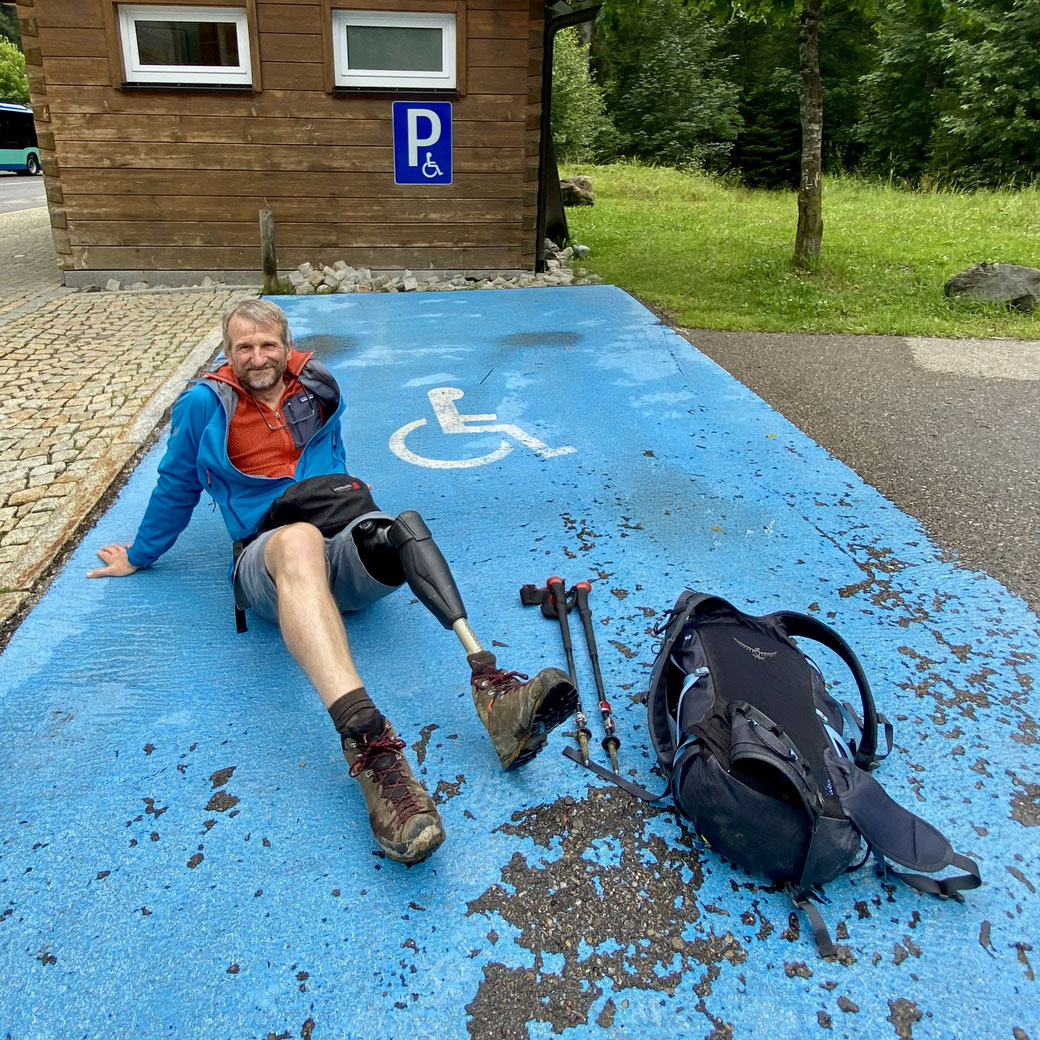
Umfrage: Lebensqualität und Körperbild von Erwachsenen in Deutschland mit Amputationen an der Unteren Extremität
Heute möchte ich euch dazu ermuntern, an einer Umfrage teilzunehmen. Sowohl die Weiterentwicklung im Bereich der Prothetik als auch Entscheidungen im Zuwendungsrecht und der Politik hängen von soliden Daten ab. Dazu ist ist notwendig, dass wir als Betroffene uns zu Wort melden. Eine einfache Art und Weise, dies zu tun, ist die Teilnahme an seriösen Umfragen. Und genau dazu möchte ich euch heute ermuntern.
Diesen Aufruf starte ich zusammen mit Jasmin Hesselmaier.
Steptics will weltweit Menschen mit Amputationen den Zugang zu Hochleistungsprothesen ermöglichen

Sportprothesen Für Jedermensch
Auf diesem Blog widme ich mich periodisch dem Thema Sportprothesen. Und auch wenn sich in diesem Bereich in den letzten Jahren viel getan hat, so haben leider noch immer viel zu wenige Menschen mit Amputationen Zugang zu diesen Prothesen. Für die meisten von uns sind sie schlichtweg nicht erschwinglich. Daher horche ich immer auf, wenn ein*e neue*r Spieler*in auf dem Markt antritt, um sich eben dieses Problems anzunehmen. Eine dieser neuen Firmen ist steptics. Und heute habe ich das Vergnügen mit Toni Padilla, einem der Mitbegründer von steptics zu sprechen. Toni ist 34 Jahre alt und kümmert sich bei steptics um Marketing, um den Vertrieb und die Finanzen.
Beyond Limits
Discovering The Best Fitness Options For People with Disabilities
Embarking on a fitness journey can be uniquely challenging for individuals with disabilities, yet it's a path brimming with opportunities for empowerment and growth. In today’s post, we'll explore a diverse array of adaptive fitness options tailored to accommodate various needs and abilities so you can stay moving.
Alles eine Frage der Einstellung
Ein Schaft, Der Sich An Die Wechselnden Bedarfe Anpassen Lässt
Der Schaft ist ausschlaggebend. Zumindest bei uns Ober- und Unterschenkelamputierten. Mit einer guten Passform steht und fällt so viel. Der Level an Aktivitäten, ob wir mit unseren Kindern rumalbern, ihnen das Fahrradfahren beibringen oder mit auf die Spitze des Klettergerüstes kommen können. Aber auch die Zeit, die wir die Prothese jeden Tag nutzen, eventuelle Schon- und Fehlhaltungen, allgemeine gesellschaftliche Teilhabe und Lebensqualität.
Amputierten Wandertag im März im Siebengebirge

Save the Date: Amputierten Wandertag am 17. März 2024
So, in einem knappen Monat - genauer gesagt am Sonntag, den 17. März 2024 - ist es wieder so weit. Dann findet die zweite Auflage des Amputierten Wandertages statt. Dieses Mal im Siebengebirge nahe Königswinter. Wie schon im letzten Jahr in der Eifel, haben Fritz (aka @fritzkretzschmar on Instagram) und ich auch dieses Jahr wieder eine schöne Strecke von etwa acht Kilometern rausgesucht und laden alle Interessierten zum Mitmachen ein. Dieses Mal geht es durch die dich bewaldeten Hügel an den Hängen des Rheintales bei Bonn. Ziel ist die noch sehr gut erhaltene Ruine der Löwenburg. Dort bietet sich einerseits ein toller Ausblick und andererseits die Gelegenheit auf ein Picknick. Wer Interesse hat, der meldet sich bitte bei mir oder Fritz. Dann schicken wir euch alle weiteren Informationen zu.
New podcast episode: Meet Christopher Rains

Sport, Peer Support, And Raising Funds and Awareness For Others Less Fortunate
So, the new episode of the podcast just went live. This month's guest is Chris Rains, who lost one of his legs during a horrible car crash. Chris and I talk about the role sports played in his recovery, the organisations that allowed him to try out various outdoor activities, and his participation in one of the Range of Motion Project's climbs to raise funds and awareness for others people affected by limb loss and limb difference.
Organisations and people mentioned during the podcast:
ClickMedical - for more information click here of follow them on Instagram.
The Beautifully Flawed Foundation - for more information click here of follow them on Instagram.
The Range of Motion Project - for more information click here of follow them on Instagram.
The Challenged Athletes Foundation - for more information click here of follow them on Instagram.
The Kirstie Ennis Foundation - for more information click here of follow them on Instagram.
Lacey Handerson - for more information click here of follow her on Instagram.
Bethany Hamilton - for more information click here of follow her on Instagram.
Kirstie Ennis - - for more information click here of follow her on Instagram.
Fallschirmspringen für Menschen mit Behinderung

Para-TAKEOFF - Inklusion beim Fallschirmspringen
Vielen von euch sind bestimmt noch die zahlreichen zufrieden lachenden Gesichter während des Para-TAKEOFF 2.5 Indoor aus der Hurricane-Factory in Berlin vom letzten Herbst in guter Erinnerung. Nicht wenige von euch waren eventuell selbst bei dem Event dabei und sind nach einem tollen Tag voller neuer Eindrücke zufrieden und glücklich wieder in ihr jeweiligesZuhause zurückgekehrt. Und auch wenn ich leider selbst im November nicht in Berlin dabei war, so will ich euch doch heute Para-TAKEOFF, die Leute hinter der Organisation und einige der von Para-TAKEOFF initiierten Veranstaltungen vorstellen.
Join me for the January Walking Challenge

Start The New Year With A Challenge - And Plenty Of Time Outdoors
Here is my call to action. Join me and walk 256 kilometres spread out over 31 days to kick off the new year in an active and really enjoyable way. The idea is explained below or can be listened to in form of a podcast. The article is actually the transcript of the latest episode.
Eine Reise in die Welt des Para-Eishockeys

Eine Reise in die Welt des Para-Eishockeys
Para-Eishockey, eine faszinierende Disziplin, die die körperliche Ausdauer und Geschicklichkeit herausfordert. Heute erzählt Benedikt Felderhoff seine ganz persönliche Geschichte, wie er zu diesem aufregenden Sport fand und was ihn daran bis heute so begeistert. Und vielleicht, so hofft er, kann Benedikt mit diesem Artikel ja auch den ein oder die andere Leser*in für das Para-Eishockey zu begeistern.
New podcast episode: Staying safe outdoors in winter - despite an amputation
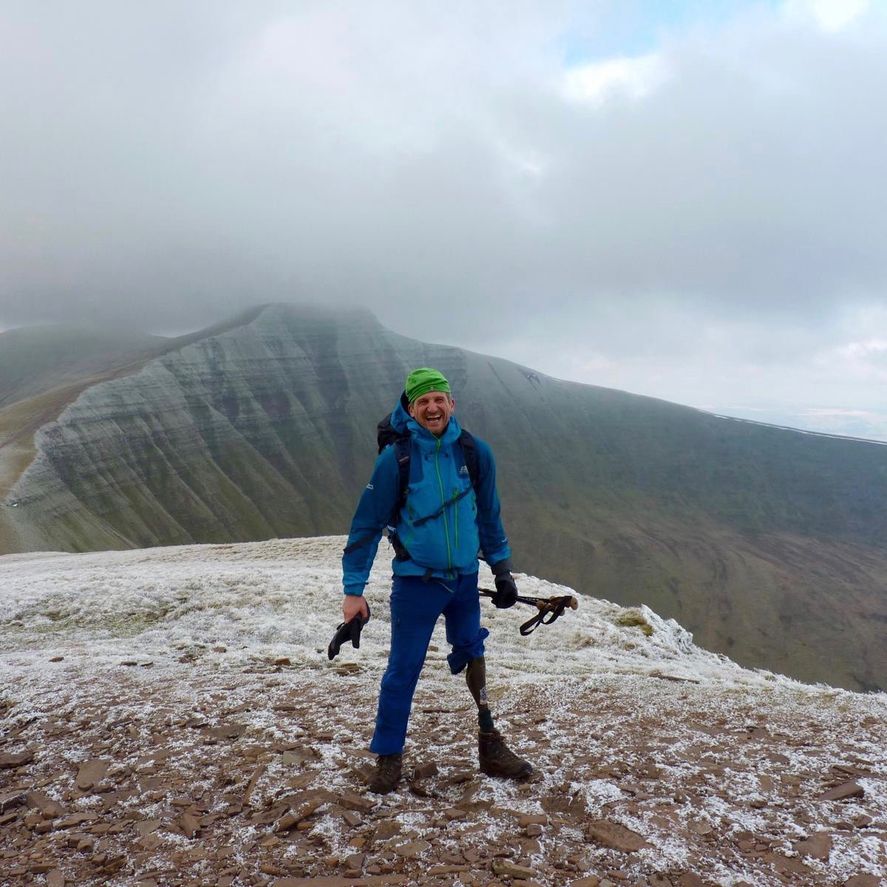
Winter is coming...
So, today is November 15th. And that means it's less than two weeks until the beginning of Advent on the one hand and the official start of winter on the other (at least meteorologically, if not yet in terms of the calendar). Winter is - in my eyes - a great time. I enjoy it every year anew: The long evenings, the cozy hours at home, and the quality time with family and friends. And as you all know, I'm also someone who likes to spend a lot of time outdoors, especially in winter. Something that is not always easy after a transfemoral amputation.
Neue Podcastfolge: Auch im Winter und trotz Amputation sicher draußen unterwegs sein

Winter is coming...
So, heute ist der 1. November. Und damit ist heute in einem Monat einerseits bereits der Beginn der Adventszeit und andererseits der offizielle Beginn des Winters (zumindest meteorologisch, wenn auch noch noch nicht kalendarisch). Der Winter ist eine - in meinen Augen - tolle Zeit. Ich genieße es jedes Jahr aufs Neue: Die langen Abende, die gemütlichen Stunden zuhause und die Zeit mit Familie und Freunden. Darüberhinaus bin ich auch jemand, der gerade im Winter gerne und viel draußen unterwegs ist. Etwas, dass nach einer Oberschenkelamputation nicht immer ganz einfach ist.
Heute im Interview: ALPS South Markenbotschafter Massimo Giandinoto

Darf ich vorstellen: ALPS South Markenbotschafter und Para-Athlet Massimo Giandinoto
Im Rahmen meiner neuen Zusammenarbeit mit ALPS South hatte ich das Vergnügen, den Krebsüberlebenden, Parasportler und Markenbotschafter von ALPS South, Massimo aus Italien, zu interviewen. Wir sprechen über die Bedeutung des Sports in seinem Genesungsprozess, über die Produkte, die er verwendet, um einen mobilen und sehr aktiven Lebensstil zu führen, und über seine Sensibilisierungsarbeit mit jungen Menschen.
Viel Spaß mit dem Interview.
New cooperation with ALPS® South
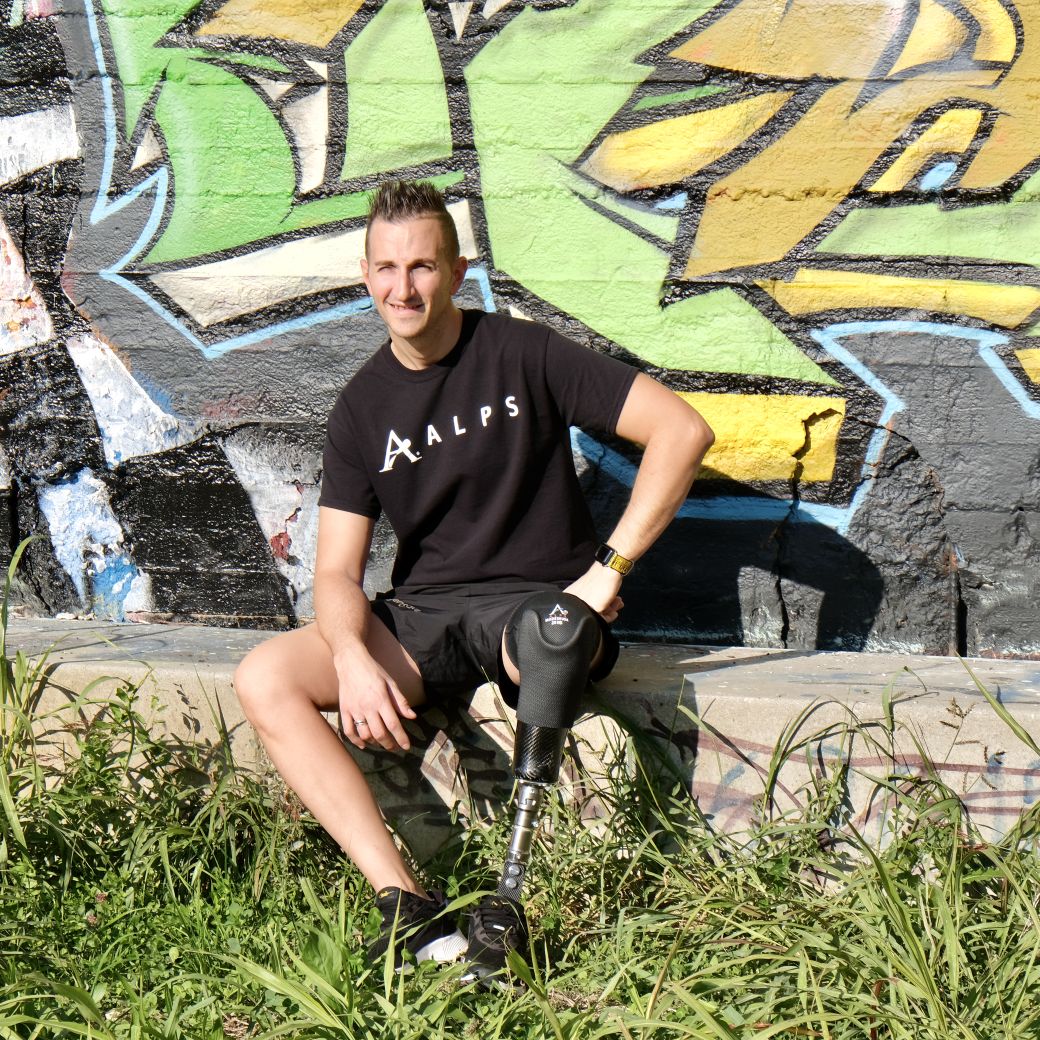
Great Products For An Active Life Style
I am happy to announce a new partnership with ALPS® South, a liner specialist from the United States of America. Over the coming weeks, you will hear more about the products and services offered by this amazing company, you will get to know some of its ambassadors, and you will see the ALPS South products in action.
So let me hand the stage over to ALPS® South.
Meet ALPS South ambassador Massimo Giandinoto
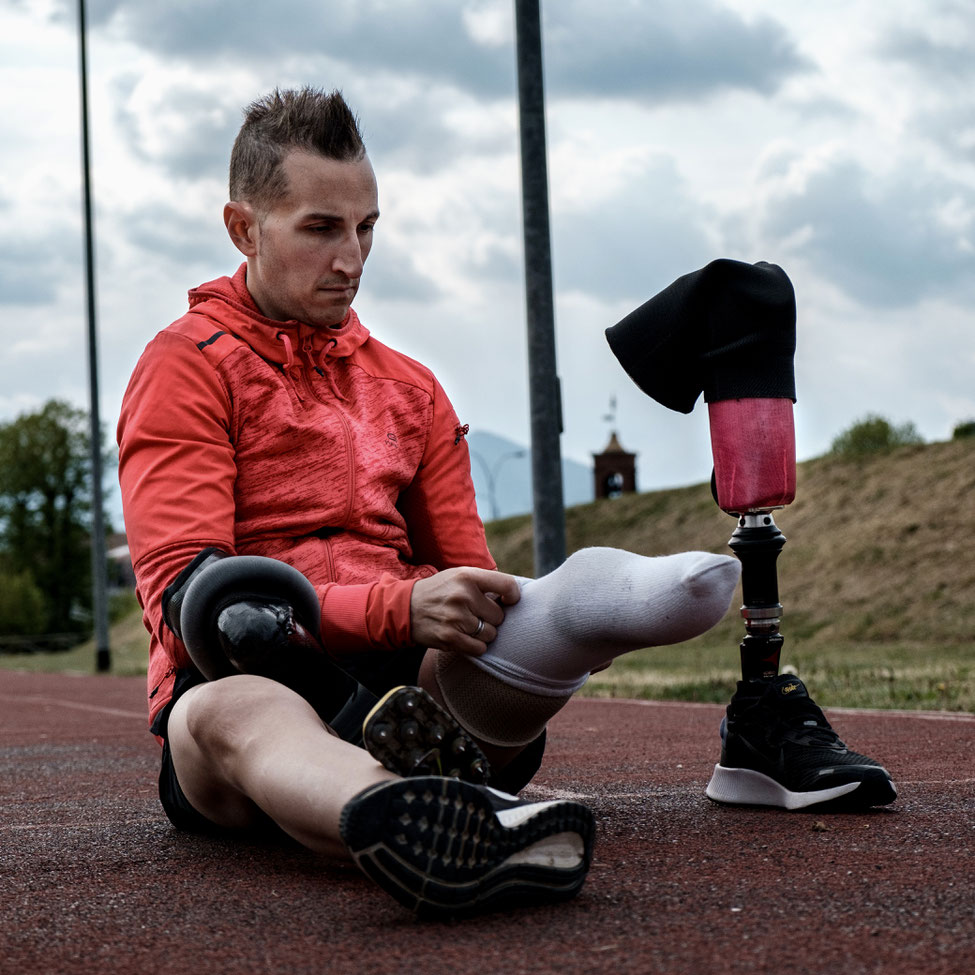
Meet ALPS South ambassador And Para-Athlete Massimo Giandinoto
As part of my new collaboration with ALPS South, I had the pleasure of interviewing cancer survivor, para-athlete, and ALPS South's brand ambassador Massimo from Italy. We talk about the importance of sports in his recovery process, the products his uses to live a mobile and very active life style, and his sensitisation work with young people.
Enjoy the interview.
The bike ride of a lifetime
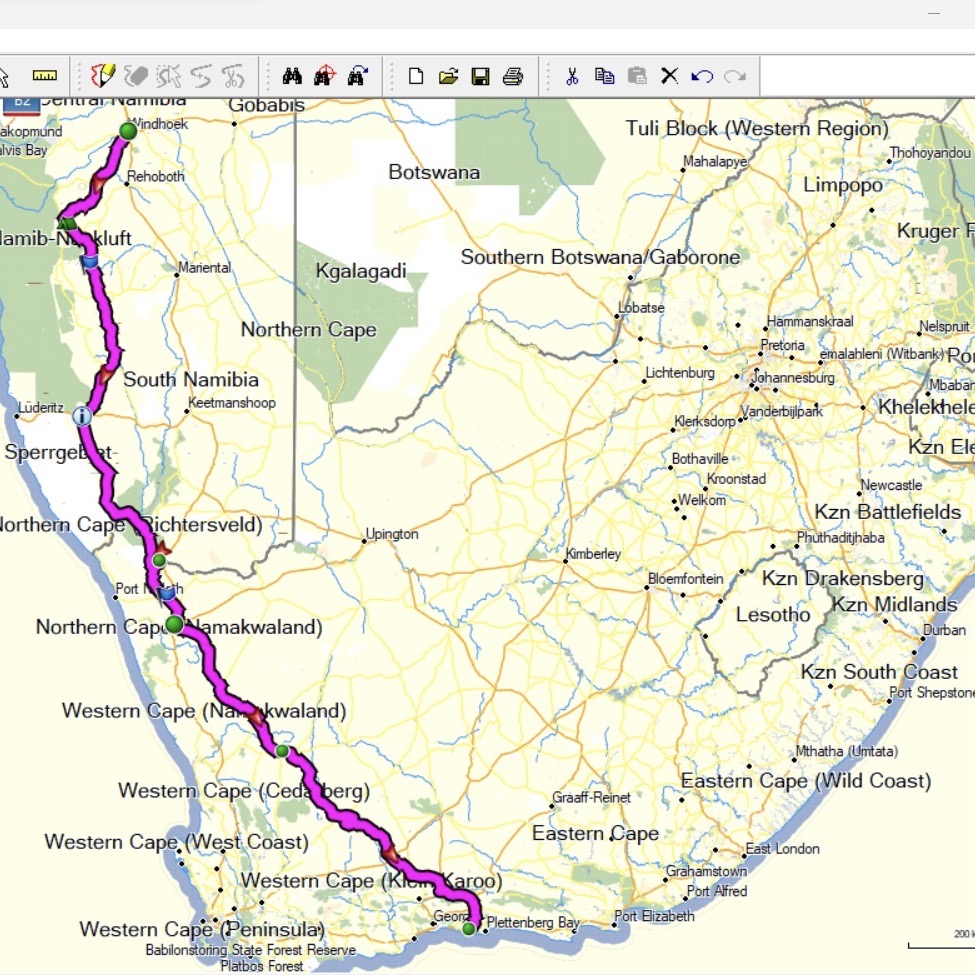
Update From Stephen
Back in February of this year, I published an interview with Stephen Drew from South Africa. We talked about all things bike-related, especially about his dream to set out on an adventure of a lifetime: A bike packing tour from Namibia over more than 2,000 kilometres of back country roads through the wild outback of Southern Africa to his home in Knysna.
And after several months of planning, Stephen is on his way.
Strategic partnerships and paid cooperations
The Active Amputee
This page is made by amputees. And it is made for amputees and their families. The Active Amputee wants to enable you to make informed decisions by providing unbiased information. The Active Amputee wants to inspire action through the sharing of stories. And the Active Amputee wants to build a community of active amputees by encouraging engagement and mutual support. Nothing more, nothing less. It‘s as easy and simple as that.
Contact Us
The people involved in The Active Amputee love to hear from you. Give us feedback about this page, send in your stories so that we can share them with others, let us know about events that are of interest for amputees, suggest topics you would like to read more about, ask questions. Really, anything that relates to amputee issues is of interest for The Active Amputee and could be featured on this side. Here is the contact form.
